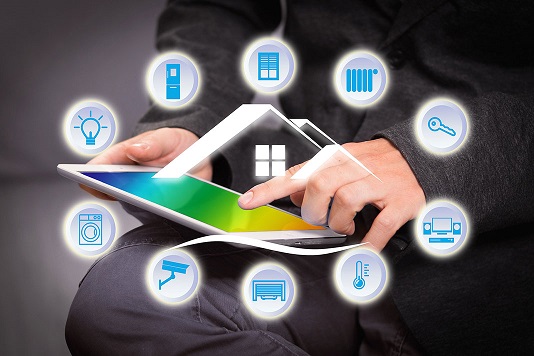
More and more homes are now using “smart” devices. Called the Internet of Things (IoT) smart devices allow us to interact with and manage our home with ease, but these devices come with a concern and that concern is security.
An example of some smart devices are refrigerators, ovens, Google, Amazon and other voice controllers, thermostats, TV’s, coffee makers, alarm clocks, security cameras, light switches, smoke detectors, baby monitors, wearable devices and doorbells.
When we bring these devices into our home it is critical that they are secured, they store a lot of personal information about you, your name, address, credit card numbers, your birthdate and more. If a smart device is hacked the information stored within can be stolen and used for malicious purposes.
Secure Your Wi-Fi Network
Your wireless router is the entry point into your home. All of your smart devices will connect to your router. Enable all security features on your Wi-Fi router.
Security
Before buying a device do some research and find out what type of security features can be enabled. Read reviews on the product and only purchase from a reputable company. Find out what kind of information is collected, how that information is used and stored and what the company does to protect the data.
Each device will have a default username and password, change those immediately. How to Choose a Password
Some smart devices allow access to your home and garage. They can unlock entry doors or your garage door. If someone gains access to those devices, they can enter your home. Be choosey on which devices you use.
Update
Update the devices regularly. Anytime a new firmware or software update is available install it.
Don’t Use Public Wi-Fi
Don’t use public Wi-Fi to log into your smart devices. Anything done on public Wi-Fi is open to hackers.
Permissions
Check each apps permissions and only give access to what is necessary. If the app does not need access to your camera, contacts, location etc. don’t permit it.
Removing a Device
If you get rid of a device disconnect it from your home, restore it to factory settings and delete the app that controls it.
Storage
If the device offers local storage choose that over cloud storage, anything stored on the cloud poses a greater security risk.
Password Protect
Always protect your smartphones and tablets with a strong passcode. If someone gains access to your smartphones or tablets, they have access to all of your apps and smart devices as well.
Disable Unneeded Features
Disable any features you don’t need. The tighter you lock down each device the safer they are. Think of the features as entry points. The fewer entry points you have the better.